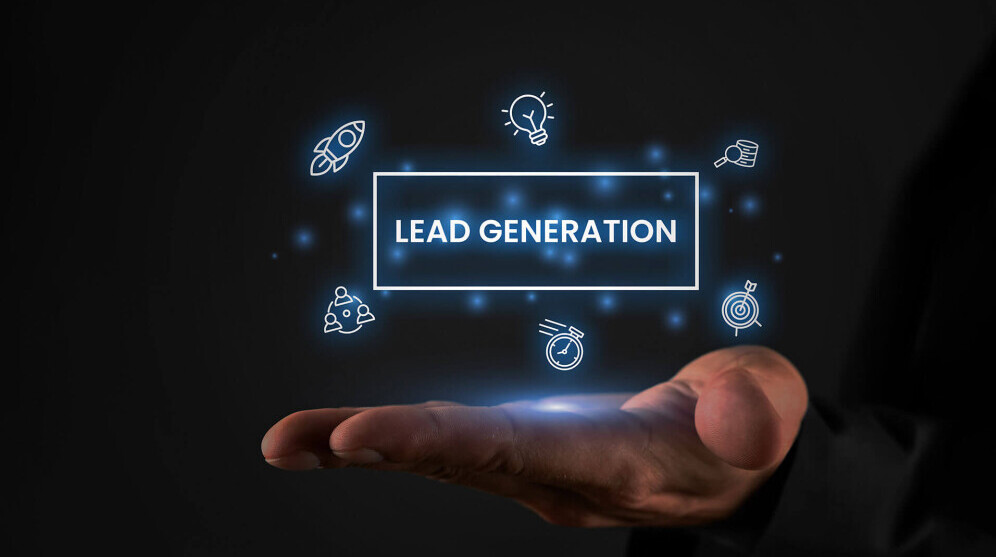How AI Identifies High-Value Leads
AI has stepped up the game in sales, marketing, and lead generation. If you’re out there looking for high-value leads—people most likely to bring value to your business—AI can help spot them faster and more accurately than traditional methods. The technology is smart enough to sift through mountains of data, point out patterns, and flag folks who are much more worth your time. Here’s how it all comes together and what you can expect when using AI to help identify truly high-value leads.

Understanding AI Tools for Lead Identification
AI tools for finding leads bring a lot more muscle than basic spreadsheets or manual sorting. These platforms use machine learning, predictive analytics, and natural language processing (NLP) to gather and analyze tons of information about potential customers. The main goal is to find patterns or signals that show a lead is more likely to convert or offer long-term value.
Some popular AIpowered lead generation tools include HubSpot, Salesforce Einstein, and Apollo.io. These tools automatically sift through website visitor data, CRM records, social media interactions, and even email activity. They enrich basic contact details with insights like company size, recent growth, buying behaviors, and job changes, so you can spot leads who actually have the right budget or a real need for your product.
When I used AI tools to help refine a client’s sales pipeline, I saw firsthand how quickly the software can highlight leads who fit a company’s "ideal customer profile." Instead of guessing who might be interested, the tool prioritized leads who had recently engaged with relevant content, moved to a decision maker role, or matched key demographic factors. I noticed right away that the accuracy of the leads improved, and the sales cycle shortened—because the team wasn’t wasting as much time chasing dead ends. If you’re kicking things off with AIpowered prospecting, expect this kind of instant clarity to give your teams a boost.
How AI Powers Lead Scoring
AIbased lead scoring goes way beyond old-school numbered lists or static rules. With AI, scoring models get trained on past sales data and real interactions to predict which prospects are most valuable and salesready. These AI models weigh different behaviors, like how often a lead visits your website, what kind of emails they open, and whether they interact with your brand on social media.
These scores constantly adjust as new data comes in. For example, if a lead who usually ignores emails suddenly downloads a pricing guide, their score can jump, quickly getting your sales team’s attention. Since the AI is learning from both successful and unsuccessful sales, it keeps getting sharper at reading the tea leaves and flagging leads with genuine potential. By tracking the impact of small actions, the system gets smarter with every new data point.
The flexibility is pretty handy. I’ve seen teams use AI to score leads based on fresh signals like recent funding rounds or product launches within the target company. Adjusting the models to suit your unique market keeps your scoring system matched up with real buying intent instead of just relying on generic signals. It’s not just about the volume of leads but about making sure the best matches float to the top. Over time, this kind of approach lets you double down on high-probability prospects and ditch leads that rarely convert.
How to Use AI to Qualify Leads

Qualifying leads is all about sorting out which prospects deserve more of your energy. AI makes this easier by analyzing both explicit data (like demographics and firmographics) and implicit signals (like behavior and engagement patterns). The AI can piece together a prospect’s buying intent by looking at what kind of content they’re reading, whether they compare your product to others, or if they attended an industry webinar.
Usually, qualifying leads manually means a lot of guesswork and time spent chasing the wrong people. AI flips this by offering a super detailed view of what makes a lead tick. For example, some platforms can send out automated questionnaires or chatbots that gather important qualification info, then immediately score or sort leads based on the responses. Meanwhile, the AI looks for signs of buying intent that you might not even realize are there, such as visits to your pricing or testimonial pages. It can even blend social media patterns—like joining your webinar or watching a demo video—that humans might overlook.
- Automated Outreach: AI can run email or chatbot campaigns that collect qualifying info, freeing you up for more valuable conversations.
- Behavioral Tracking: Every click, time spent on page, or document download feeds the AI new data to fine tune its understanding of each lead.
- Predictive Routing: Based on the AI’s qualification process, leads get routed to the right sales rep or moved into personalized nurture tracks.
This means your team doesn’t waste as much time on unqualified prospects or miss out on hidden gems that might have slipped through the cracks. Leaning on AI like this supercharges your funnel, making sure each step is focused—and making it easy to adapt as your ideal customer profile changes over time.
AI and Lead Valuation
Putting a value on each lead is super important for smart sales planning. AI helps with valuations by crunching numbers and looking at lots of different factors that predict lifetime value, likelihood to convert, and even how much upsell or cross-sell potential a lead has. Instead of just relying on a gut feeling, AI makes it possible to give every lead a realistic projected value.
Here’s how it usually works. The AI model takes in sales history, previous deal sizes, customer retention rates, and any available upsell or renewal data. It then creates a scoring system for assigning a “potential value” to each lead. This helps you focus on leads who don’t just close fast but are likely to bring repeat business or higher revenue over time.
Some teams also use AI to analyze social signals, recent press, or financial activities—anything that hints at new budgets or changing needs. I’ve found that using these extra data points can lift ROI on sales efforts because you’re prioritizing leads with more buying power or those at just the right moment for your offer. Along with traditional data, this modern info makes your valuation much more accurate and helps your company stay ahead of your competition.
Getting Started with AI for High Value Lead Generation
Jumping into AI for finding high-value leads doesn’t mean you need a huge tech budget up front. Many AI tools plug right into your existing CRM or marketing platforms, so you can start small and scale up as you go. Here are some of the basics I recommend for anyone just beginning:
- Pick an AIEnabled Tool: Start with a platform like Salesforce Einstein, HubSpot, or Apollo.io, which offers AIpowered lead scoring or enrichment out of the box.
- Clean Up Your Data: Good data makes AI more accurate. Make sure your contact info, activity logs, and customer records are updated and consistent.
- Define Your Ideal Profile: Teach the AI what a high-value lead looks like for your business by tagging previous “bestfit” customers.
- Monitor and Adjust: Review the leads AI surfaces and tweak your models as your understanding grows. Get feedback from your sales team to catch false positives or uncover new traits.
- Automate Outreach Carefully: Use AIpowered automations for initial contact or nurturing, but step in personally when a lead shows real promise.
Getting these basics right sets the stage for more advanced AI features down the line, like predictive revenue forecasting or automated proposal generation. As your business grows, you’ll find that the same groundwork you set up at the beginning will make it easy to scale your pipeline and adapt to new industries or customer profiles.
What To Watch Out For When Using AI for Lead Identification
AI is really powerful, but it’s not magic. There are a few common snags that can slow you down or throw off your results if you’re not aware:
- Bad Data Quality: If your CRM is messy or outdated, AI will make decisions based on bad info, which could hurt your results.
- Lack of Customization: One size fits all models can work, but tuning your AI to your unique market makes a difference.
- Missed Context: AI sees a lot, but it can miss subtleties, like recent changes in management or industry news, which sometimes matter a lot for valuation.
- Overreliance on Automation: Personal touch still matters. Let your sales team step in when it counts.
Combining AI-driven insights with real human judgment gives you the most balanced approach for finding, scoring, and qualifying high-value leads. Always leave room for your team to question, adjust, and use their own experience to make decisions alongside the tech. Remember, AI is there to make your life easier—not replace the judgment of your team.
Tips to Maximize AI-Driven Lead Generation
Staying ahead with AI-driven lead generation is part technical, part strategic. Here are some tips that have worked for me and others looking to get more value out of AI:
Regularly Refresh Your Lead Data: Keep your info up to date and import signals from new sources like LinkedIn or industry news.
Sync Sales and Marketing: The more your teams work together, the easier it is for the AI to spot useful patterns and surface leads that truly matter. Joint meetings and feedback loops speed up learning for both the AI and your people.
Combine AI with Human Insight: Use AI for the heavylifting, but pair it with a sales rep’s instinct and experience for best results. Feedback from the field helps fine tune your AI’s lead scoring over time.
Track Metrics Beyond Conversion: Look at long-term customer value and post-sale engagement to help the AI get smarter about what makes a lead really valuable. Don’t rely on quick wins alone; bigger outcomes often take a little more patience, and AI can help map that out if you track the right numbers.
Keep Experimenting: AI models improve with ongoing feedback and new data. Test different data points, signals, and scoring rules as your business evolves. Every tweak you make teaches your models to perform better and stay a step ahead of your competitors.
When you blend these best practices with the power of AI, your lead generation process not only speeds up but also delivers more reliable, higher value prospects along the way. That means less wasted effort and more closed deals for your business.
Frequently Asked Questions
What is the AI tool for finding leads?
Answer: AI tools like HubSpot, Salesforce Einstein, and Apollo.io help find high-value leads by analyzing diverse data sources and surfacing those most likely to convert.
How is AI used for lead scoring?
Answer: AI uses machine learning models to assess engagement, demographics, behaviors, and more to score leads, helping sales teams focus on the best prospects.
How to use AI to qualify leads?
Answer: AI qualifies leads by analyzing both explicit data (like company size) and implicit signals (like buying intent), automating outreach, and flagging prospects that match your ideal profile.
How is AI used in valuations?
Answer: AI assigns value to leads by looking at past sales, potential deal size, engagement metrics, and external signals to prioritize leads with high lifetime or revenue potential.
AI has quickly become a valuable ally in finding and prioritizing high-value leads. With the right balance of technology and human know-how, you can build a pipeline filled with prospects that are worth your team’s time and energy. As AI moves into more areas of sales, businesses willing to adapt and team up with smart tools stand to gain the most in the race for new customers and revenue.


